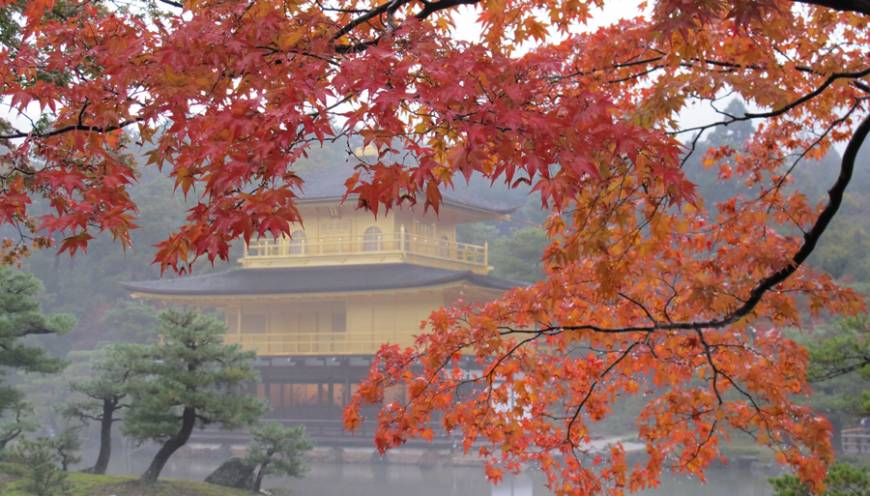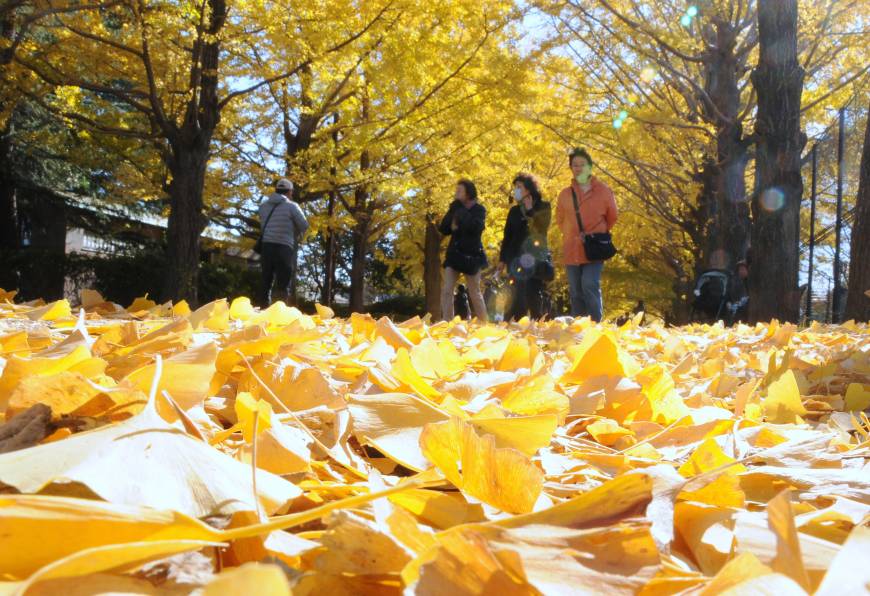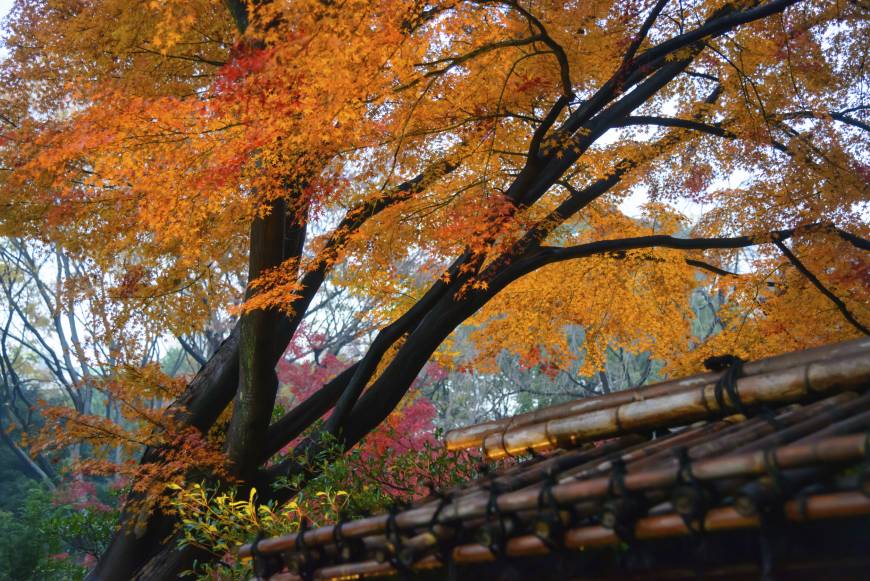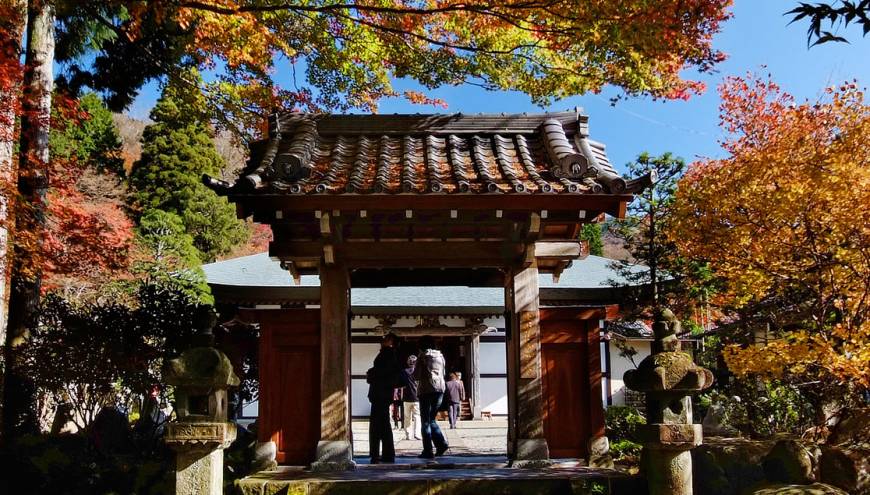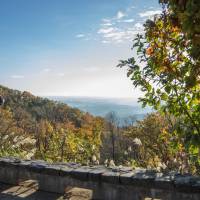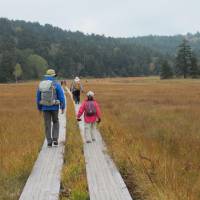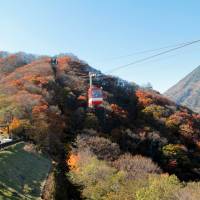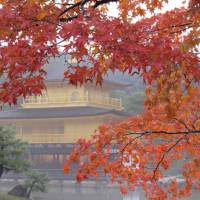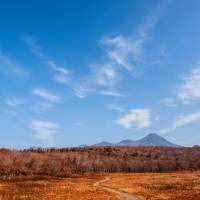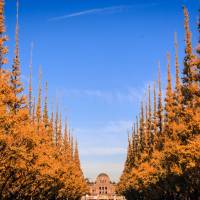While Japan is famous worldwide for its spring cherry blossoms, its autumn leaves are equally as breathtaking. The country's mountainous terrain means travelers can see hills full of reds, oranges and yellows — if they time their trips just right.
Here are some of the best locations for viewing koyo (autumn leaves) in Japan.
Lined with red temples, orange trees and relaxing waterfalls, Mount Takao is perfect from an autumn day trip out of Tokyo. A traditional spot to enjoy soba noodles with tororo yam sauce, one can view Japanese maple and cedar trees as they change color. You have the option of hiking up the 599-meter holy mountain and taking a cable car. Takao is part of Hachioji City and can be easily accessed via the Keio Takao Line.
Oze National Park in Gunma Prefecture encompasses 372 sq. km of forest, marshland and mountainous land where the leaves age beautifully every fall. A 75-minute shinkansen ride is all it takes to for Tokyoites to reach this destination perfect for a refreshing walk along the raised Ozegahara marshland trail, the Ozenuma pond trail and others. Each trail can be completed in six to eight hours. While this can be a day trip, lodging is available for a longer stay. Access the park via highway bus from late May to early October.
Nikko National Park offers a view of golden larch trees and bright orange marshland grasses. The park’s Senjogahara Plateau Nature Trail offers hikers a three-hour walk surrounded by mountains along the Yukawa River. Nikko’s Tosho-gu Shrine was built in 1617 and is the scene of five national treasure structures in Japan. During the fall festivities this shrine is the scene of the “procession of a thousand warriors,” a reenactment of an Edo Period grand parade.
Visit Kyoto from mid-October through mid-December to view the changing of leaves in Japan’s ancient capital. The Southern Higashiyama Walk takes about four hours and allows travellers views of Maruyama-koen and Shorenin Temple. Kyoto is accessible via overnight highway bus or shinkansen.
Showa Memorial Park in Tachikawa, 30 minutes from central Tokyo, features a canal lined with ginkgo trees that are colored yellow a few weeks earlier than the trees in Tokyo. Entrance fee for Showa Kinen Park, accessible via JR Chuo Line, ¥410. Open daily 9:30 a.m. to 5 p.m.
Shiretoko National Park in east Hokkaido is on the list of UNESCO’s World Heritage sites. It’s best viewed before Oct. 20, as it is in the far north of Japan. A ¥250 admission fee allows visitors access to an elevated boardwalk around 800 meters of unspoiled national park space, where the five lakes formed by the volcanic eruption of Mount Io can be seen.
Embrace your inner zen as you stroll through the beauty of Tokyo’s traditional landscape garden, Rokugien. The name of this park means “six poems,” and references the 88 scenes it represents from famous poetry. The park was built for the fifth Tokugawa Shogun around 1700 and is accessible from 9 a.m. to 5 p.m. for a fee of ¥300. During the fall season, the park is lit at night for optimal autumn leaf viewing.
A bit closer to home for Tokyoites hoping for a casual stroll through the joy of falling leaves is The Ginkgo Ave in Meiji Jingu Gaien Park. From late November to early December, wanderlusters can freely stroll the 300meter walkway under 146 ginkgo trees, with the Meiji Memorial Picture Gallery in view. Once the sight of the 1964 olympics, this park will soon be host to the Tokyo 2020 Olympics and paralympic stadium and offers sports facilities for those hoping to play baseball or do some ice skating. The space is accessible via the JR Chuo Line and Toei Subway Oedo Line among others. For more information please visit the park’s official site.
Hakone is a refreshing getaway from the crowded Tokyo express train lines just 100 kilometers away from the city. A ¥2,080 ticket from Shinjuku will grant you access on the Romance Car to Hakone, a town famous for its hot springs, views of Mount Fuji, and Odawara Castle. This mid to late October, watch the leaves change from a place which feels far, far away.
Shirakawa Village is on the UNESCO list of World Heritage sites and allows visitors to see 114 250-year-old farmhouses done in the gassho style, with large roofs resembling the hands of monks praying, over attics which cultivate silkworms. This mountain village lies in the Gifu Prefecture, a ¥2,500 highway bus trip from Tokyo depending on the season. Shirakawa-go’s changing of season is best viewed early October to late November.
For a poetic experience close to town this autumn visit Koishikawa Korakuen, a seventeenth century Edo Period garden reminiscent of an ancient poem. Written for an emperor achieving happiness for himself only after providing happiness for his people, the verse inspired one of Tokyo’s oldest parks. Landscapes provide motifs from ancient China and Japan and will be tuning bittersweet shades of ginkgo yellow, and maple orange and scarlet from late November to early December. Admission to the park is ¥300 from 9 a.m. to 5 p.m. daily, and the park is accessible via the JR Chuo Line.
Compiled by Kelly Anne Lutz






